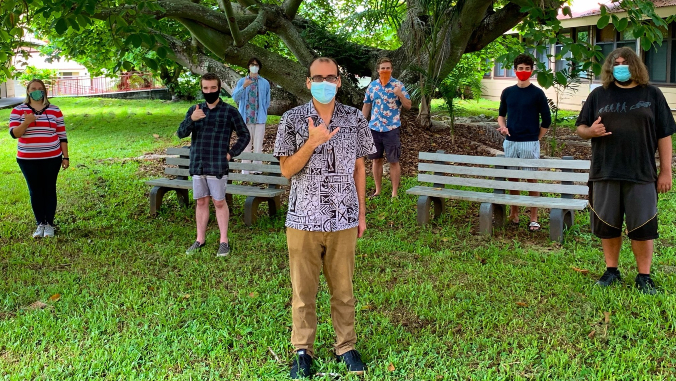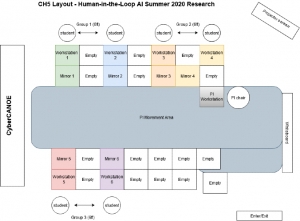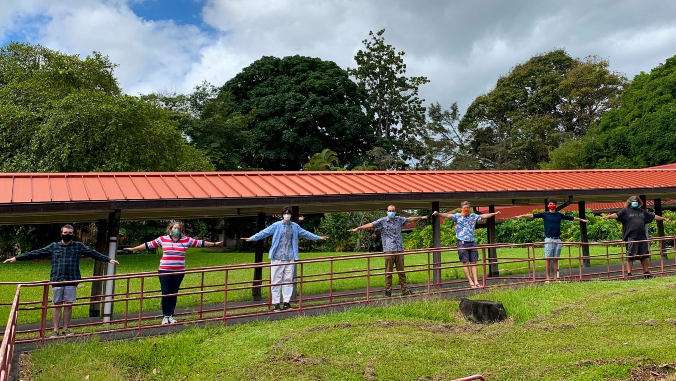
AI student research conducted in the age of COVID-19
Six students at the University of Hawaiʻi at Hilo participated in an innovative research program this summer developing artificial intelligence (AI) systems to better support scientists in fields such as psychology, ecology and marine science.
The work was done on campus, under the instruction of Assistant Professor of computer science Travis Mandel, adhering to appropriate coronavirus safety measures including wearing masks, sanitizing workstations and proper social distancing both inside and outside the classroom.
The eight-week interdisciplinary data science research experience was supported by the National Science Foundation and students taking the “Human-in-the-Loop Research Experience” were paid a stipend to participate. Mandel, an expert in AI, explains this was not a typical course, but rather students were learning in a “hands-on manner while working on their cutting-edge research projects.”
The students investigated three separate, but related, research projects:
- James Boyd and Sebastian Carter researched how AI can help scientists collect better data in domains like psychology and ecology.
- Ed Kashman and Kosta Devedzhiev developed an interface for “symbiotic learning,” where the AI system can work with humans on tasks such as labeling data.
- Mark Jimenez and Emily Risley looked into AI tracking systems that could benefit areas with limited data, particularly marine science research.

The classroom was arranged to abide by COVID-19 safety guidelines. Mandel said the center of the room was a “movement area,” where he could freely move around, switching quickly between teams to help the students. Students were spaced out six-feet apart near the edges of the room, and were not allowed to move from their assigned seats.
For students to see each other’s screens, they utilized Zoom, or projected on CyberCANOE (Cyber Enabled Collaboration Analysis Navigation and Observation Environment), a large screen format with ultra high resolution and 3D-enabled flat-screen displays connected to a high-performance computer.
“A key aspect was that I needed to see the students’ screens to help them with their projects,” said Mandel. “Looking over their shoulder wasn’t an option due to the six-foot distancing rule. Therefore, we came up with a unique setup where students’ monitors were mirrored to the monitor on the opposite side that was facing me in the middle of the room [so] I could easily see what the student was working on. We even connected the mice and keyboards up so that I could point to things or write to things on the students’ screen to allow me to better assist students while maintaining social distance.”
Students gained a top-notch research experience while expanding their knowledge and skills in STEM. Due to the immersive and intimate nature of the eight-week program, Mandel and his students could tackle tasks best suited for each student and maximize their learning experience.
“I am very grateful to the National Science Foundation for giving me the opportunity to hold this, as well as UH Hilo administrators for giving me permission to hold this in person,” Mandel said. “I think it was a successful way to integrate research and education. Students really learned a lot of new skills, while at the same time helping solve some really challenging and important research questions involving AI and its impact on science. And we had a lot of fun along the way.”
For more details, visit UH Hilo Stories.
—By Susan Enright

